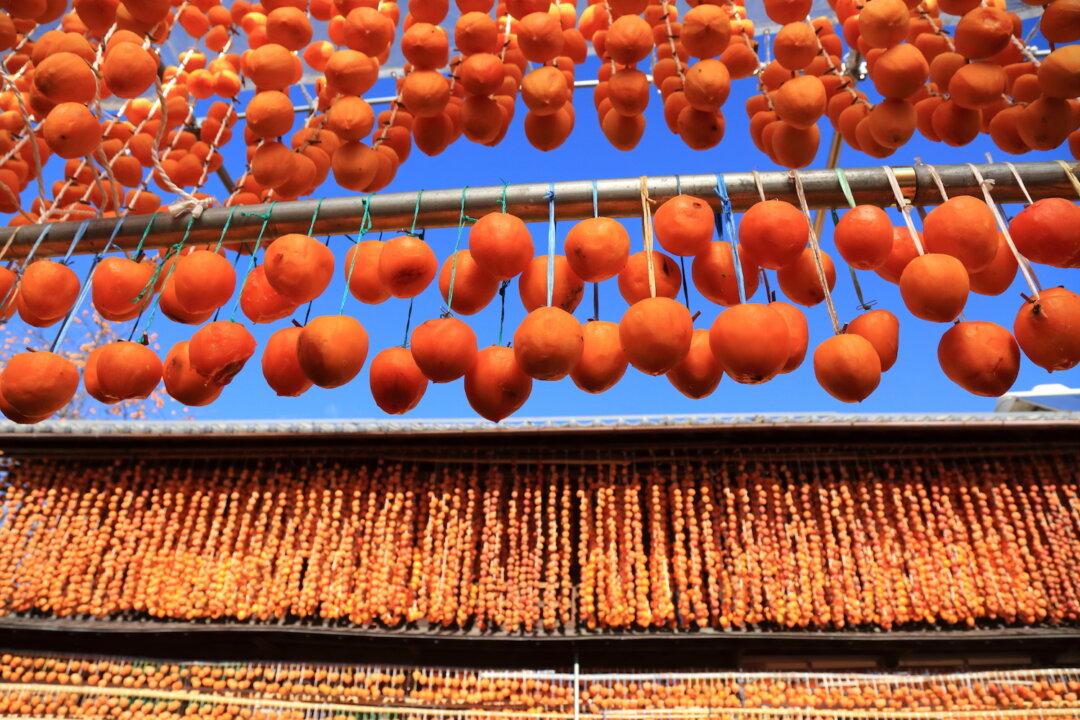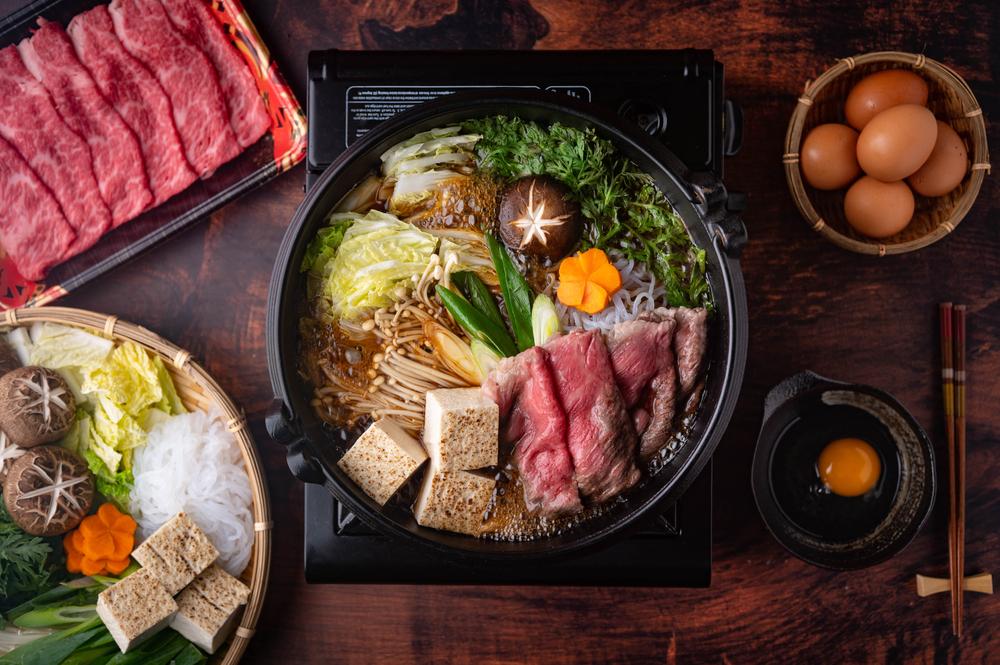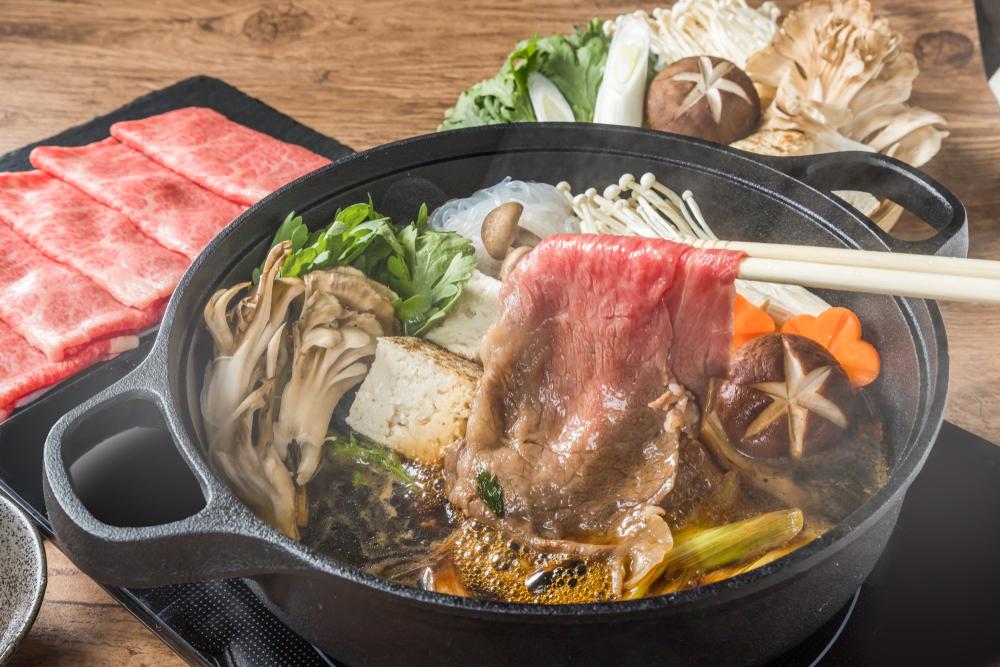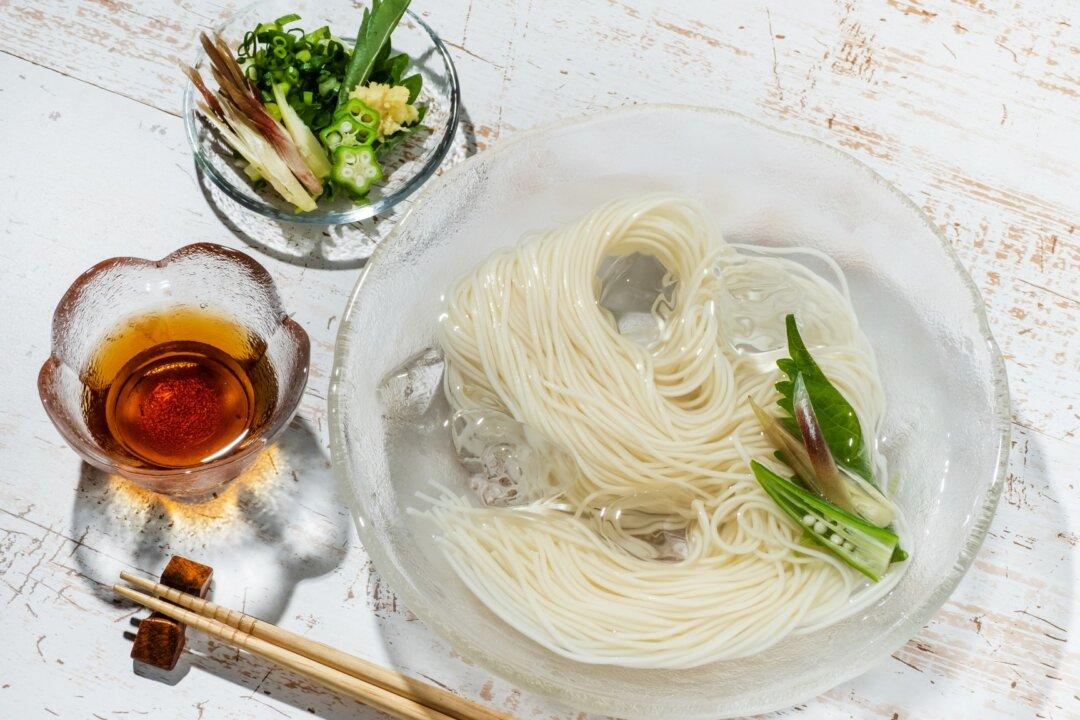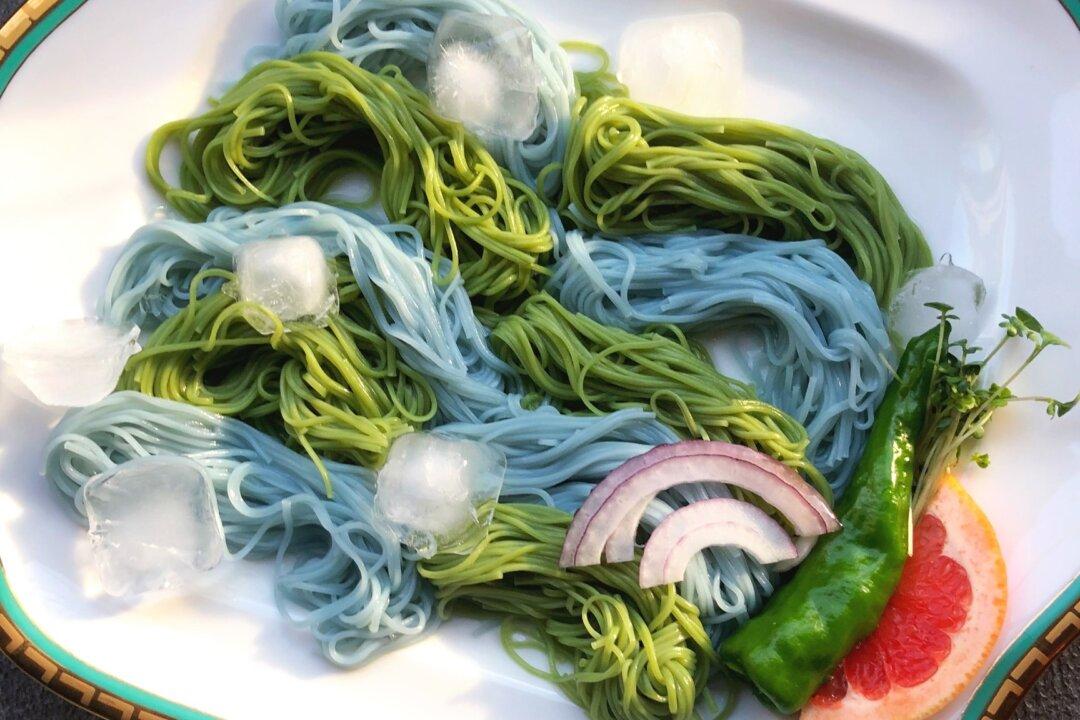In Japan, to be alive in autumn is to live on persimmons. The sweet ones, crisp or soft, are everywhere. You’d know an astringent variety at first taste—you would spit it out immediately and run to rinse your mouth.
Or, if you were among those fruit magicians privy to the art of making hoshigaki, or dried persimmons, you’d happily take a crateful home and get to work.

